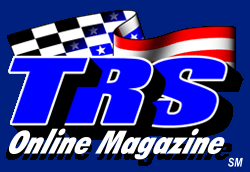 |
|
||||||||||
|
|
|
Do you know what kind of tires you have on your truck? Do you have passenger car tires, or do you have light truck tires? Do you haul your trail rig on a trailer? Does your trailer have trailer tires? Tires are expensive, and sometimes people get more influenced by price, than making sure they're using the right tire for their vehicle. There are basically three types of tires:
Where people generally get in trouble is when they put passenger tires on a truck or trailer. That's not to say you can't put a passenger tire on your truck, but not if you're ever going to be hauling anything in your truck. Passenger (P) Tires & Your Ranger: If you're using your Ranger as a low rider or hot rod, and don't ever plan on hauling anything in it, than a passenger tire will work for you. In fact, you'll most likely need a passenger tire to get the stance you want, or for the proper handling and traction. Using the diagram below, we'll discuss the tire code on the side of a passenger tire:
P
- The "P"
indicates the tire is for passenger vehicles. Aspect
Ratio - This two-digit number, known as the aspect ratio, gives
the tire's ratio of height to width. Numbers of 70 or lower indicate a
short sidewall for improved steering response and better overall
handling on dry pavement. Speed Rating - The speed rating denotes the speed at which a tire is designed to be driven for extended periods of time. The ratings range from 99 miles per hour (mph) to 186 mph. These ratings are listed below. Note: You may not find this information on all tires because it is not required by law.
*For tires with a maximum speed capability over 149 mph, tire manufacturers sometimes use the letters ZR. For those with a maximum speed capability over 186 mph, tire manufacturers always use the letters ZR. Light Truck (LT) Tires & Your Ranger: Light truck tires are engineered to operate at maximum load for an indefinite amount of time. In fact, every component of a light truck tire is designed with an extra safety factor to accommodate the increased stress that comes with higher loads and inflation pressures. The steel belts are heavier, and there are typically stronger radial cords with more cords per inch on a light truck tire when compared to a passenger tire. Because of the heavier construction, light truck tires are generally heavier than the same size passenger tire. Using the diagram below, we'll discuss the tire code on the side of a passenger tire:
LT
- The "LT" indicates the tire is for light trucks. Max.
Load Single kg (lbs) at kPa (psi) Cold - This information
indicates the maximum load and tire pressure when the tire is used as a
single.
LT-Metric, LT-Flotation and LT-Numeric tires are branded with their load range (Load Range E or LRE) or their ply rating (10 Ply Rated) on their sidewalls and list their appropriate load range letter in their descriptions as LT245/75R-16 E, 7.50R-15 D or 31x10.50R-15 C. Special Trailer (ST) Tires: Automotive radial tires with their flexible sidewalls notably accentuate trailer sway problems. The stiffer sidewalls and higher operating pressures common with Special Trailer (ST) tires helps control and reduce the occurrence of trailer sway. Bottom line, trailers are more stable and pull better on tires designed specifically for trailer use. Also consider that all Light Truck (LT) and Special Trailer (ST) tires are fully rated for trailer applications. This means the tires can carry their full sidewall weight rating when used on a trailer. Tire Markings - Just like the passenger and light truck tires, the sidewalls of a trailer tire will have the aspect ratio, load range, and rim size listed on them.
Conclusion: Hopefully this article will help insure that you're using the right tires on the truck you're towing / hauling with, and your trailer. Resource: www.safercar.gov
|
|
|